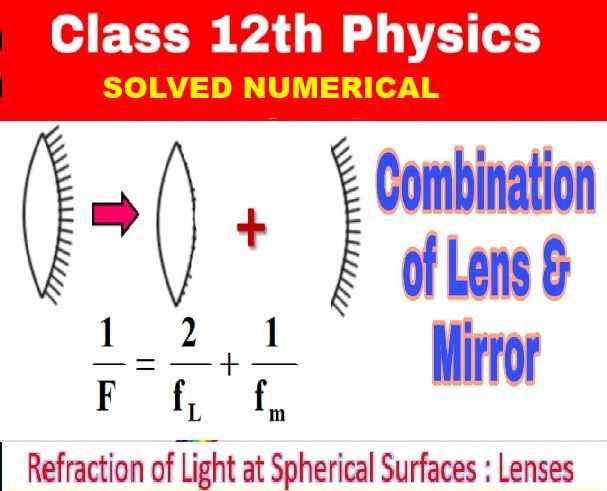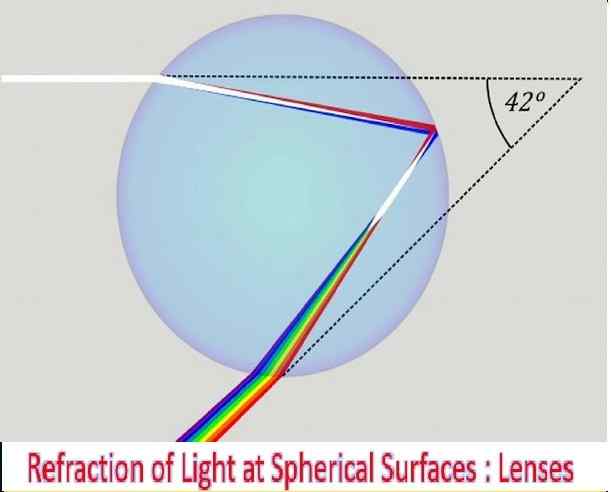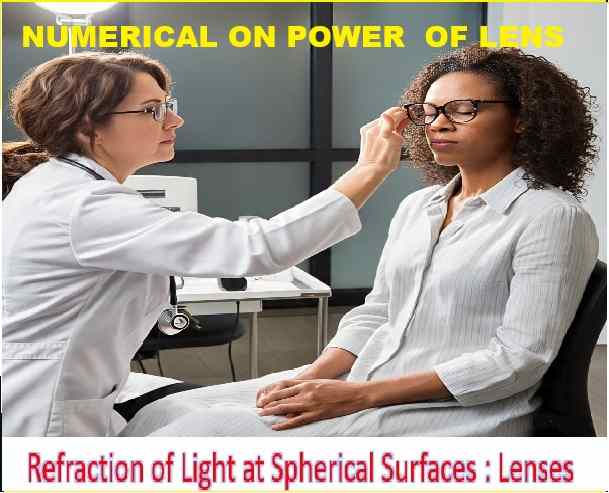Model Question Paper-6 Class-7 ML Aggarwal ICSE Mathematics Solutions. APC Understanding Mathematics for ICSE Class-7 Model Question Paper-6 Solutions of Section-A, B, C and D based on Chapter-10 to 17. Visit official Website CISCE for detail information about ICSE Board Class-7 Mathematics.
Model Question Paper-6 Class-7 ML Aggarwal ICSE Mathematics Solutions
-: Select Topics :-
Paper-6 Class-7 ML Aggarwal
(Based on Chapters 10 to 17)
Time allowed: 2 Hours
Maximum Marks: 90
General Instructions
- All questions are compulsory.
- The question paper consists of 29 questions divided into four sections A, B, C, and D.
- Section A comprises of 8 questions of 1 mark each.
- Section B comprises of 6 questions of 2 marks each.
- Section C comprises of 10 questions of 4 marks each.
- Section D comprises of 5 questions of 6 marks each.
- Question numbers 1 to 8 in Section A is multiple choice questions where you are to select one correct option out of the given four.
Section – A
(Model Question Paper-6 Class-7 ML Aggarwal ICSE Mathematics Solutions)
Question numbers 1 to 8 is of 1 mark each.
Question 1.
In the given figure, if ∠AOC and ∠COB form a linear pair, then the value of x
(a) 60
(b) 55
(c) 50
(d) 45

Answer
∠AOC and ∠COB = 180° (Linear pair)
⇒ 2x + x + 15 = 180°
⇒ 3x = 180°- 15°= 165°
⇒ x = 55° (b)
Question 2.
An exterior angle of a triangle is 118°. If one of the two interior opposite angle is 54°, then the other interior opposite angle is
(a) 62°
(b) 54°
(c) 64°
(d) 59°
Answer
One exterior angle of a triangle = 118°
One of interior opposite two angles = 54°
Second inner angle = 118° – 54° = 64° (c)
Question 3.
In a right-angled triangle, the lengths of two legs are 8 cm and 15 cm. The length of the hypotenuse is
(a) 23 cm
(b) 20 cm
(c) 17 cm
(d) 17 m
Answer
In a right angled triangle
Two legs are 8 cm and 15 cm
Hypotenuse =
= √(64 + 225) = √289 = 17 cm (c)
Question 4.
If ΔABC = ΔPRQ, the the correct statement is
(a) AB = PQ
(b) ∠B = ∠Q
(c) ∠C = ∠R
(d) AC = PQ
Answer
∆ABC = ∆PRQ
AC = PQ is correct (d)
Question 5.
The number of lines that can be drawn parallel to a given line l through a point outside the line l is
(a) 0
(b) 1
(c) 2
(d) infinitely many
Answer
Number of lines drawn from a point parallel to a given line is only one. (b
Question 6.
If the area of a circle is numerically equal to its circumference, then the diameter of the circle is
(a) 2 units
(b) 4 units
(c) 6 units
(d) 8 units
Answer
Area of circle = Circumference (numerical)
πr2 = πd = 2πr ⇒ r = 2
d = 2r = 4 units (b)
Question 7.
A quadrilateral having exactly two lines of symmetry and rotational symmetry of order 2 is a
(a) square
(b) parallelogram
(c) rhombus
(d) kite
Answer
A quadrilateral has two lines of symmetry
and rotational symmetry of order 2 is a rhombus. (c)
Question 8.
A mode is the observation of the data
(a) whose position is in the middle
(b) having maximum value
(c) occurring a maximum number of times
(d) occurring a minimum number of times
Answer
Mode is the observation of the data
occurring maximum number of times. (c)
Section – B
( Model Question Paper-6 Class-7 ML Aggarwal ICSE Mathematics Solutions )
Question numbers 9 to 14 are of 2 marks each.
Question 9.
An angle is 30° more than one-half of its complement. Find the angle.
Answer
Let required angle = x
Its complement angle = 90° – x
According to the condition,
x = + 30
⇒ 2x = 90 – x + 60
⇒ 2x + x = 150
⇒ 3x = 150 150°
⇒ x = 50°
Hence required angle = 50°
Question 10.
In the given figure, find the value of x.

Answer
In the given figure,
∠BAC = ∠EAF (Vertically opposite angles) = 70°

But Ext. ∠ACD = ∠BAC + ∠B
125° = 70° + x
⇒ x = 125° – 70° = 55°
x = 55°
Question 11.
A die is thrown once. Find the probability of getting
(i) a prime number
(ii) a composite number
Answer
A die is thrown
Total number of outcomes = 6
(i) Probability of a prime number = (2, 3, 5) = =
(ii) Probability of a composite number= (4, 6) = =
Question 12.
You want to show that ΔDEF = ΔPQR by SAS congruence rule.
It is given that ∠E = ∠Q, you need to have
(i) EF = …….
(ii) PQ = ………

Answer
∆DEF = ∆PQR (SAS criterion)
∠E = ∠Q
EF = QR
PQ = DE

Question 13.
In the given figure, two adjacent sides of a parallelogram are 15 cm and 10 cm. If the distance between the longer sides is 8 cm, find the
(i) area of parallelogram
(ii) the distance between the shorter sides.

Answer
In ||gm ABCD
AB = 15 cm, BC = 10 cm
Perpendicular DE = 8 cm and DF = ?

Now area of ||gm ABCD = Base × Height
= AB × DE = 15 × 8 cm2 = 120 cm2
If base BC = 10 cm
Then height DF = =
= 12 cm
Question 14.
Find the mean age of six students whose ages (in years) are:
15, 13, 16, 13, 14, 16.
Answer
Mean age of 15, 13, 16, 13, 14, 16
=
=
= 14.5 years
Section – C
( Model Question Paper-6 Class-7 ML Aggarwal ICSE Mathematics Solutions )
Question numbers 15 to 24 are of 4 marks each.
Question 15.
In the given figure, lines l and m are parallel. Find the values of x, y, and z.

Answer
In the given l || m
x = 65° (Alternate Angles)
Similarly z = y

But x + 45° + z = 180° (Angle on one side of a line)
⇒ 65° + 45° + z = 180°
⇒ 110° + z = 180°
⇒ z = 180°- 110° = 70°
y = z = 70°
x = 65°, y = 70°, z = 70°
Question 16.
In the given figure, BC = AC. Find the value of x.

Answer
In the given figure,
BC = AC, ∠C = x, ∠ABD = 155°
∠CAB = ∠CBA
But ∠ABC + ∠ABD = 180° (Linear pair)
⇒∠ABC + 155°= 180°
⇒ ∠ABC = 180° – 155° = 25°
⇒ ∠CAB = ∠ABC = 25°
But ∠CAB + ∠ABC + ∠ACB = 180° (Angles of a triangle)
⇒ 25° + 25° + x° = 180°
⇒ x + 50° = 180°
⇒ x = 180° – 50° = 130°
Question 17.
If the lengths of the two sides of a triangle are 6 cm and 8.5 cm, then what can be the length of the third side?
Answer
Length of two sides of a triangle are 6 cm and 8.5 cm.
Third side will be less than (6 + 8.5) = 14.5 cm
and greater than (8.5 – 6) = 2.5 cm
Question 18.
In the given figure, AD is perpendicular bisector of .
(i) State three pairs of equal parts in ∆ABD and ∆ACD.
(ii) Is ∆ABD = ∆ACD? Give reasons.
(iii) Is ABC an isosceles triangle? Give reasons.

Answer
In ∆ABC, AD is perpendicular bisector of BC
BD = DC and ∠ADB = ∠ADC = 90°

Now in ∆ABD and ∆ACD
BD = DC (D is the mid-point of BC)
∠ADB = ∠ADC (Each 90°)
AB = AD (Common)
∆ABD = ∆ACD (SAS criterion)
AB = AC (c.p.c.t.)
∆ABC is an isosceles triangle.
Question 19.
Draw a line, say AB, take a point P outside line AB. Through P, draw a line parallel to line AB using ruler and compasses only.
Answer
Steps of construction :
(i) Draw a line AB.
(ii) Take a point P outside AB.
(iii) Take a point Q on AB and join PQ.
(iv) From P, construct ∠OPX = ∠PQB and product XP to Y.
Then XY is parallel to AB.

Question 20.
In the given figure, ABCD is a rectangle with AB = 20 cm and BC = 14 cm. Two semicircles are cut from each of two breadths as diameters. Find
(i) the area of the shaded region
(ii) the perimeter of the shaded region.
Take π = .

Answer
In the given figure,
ABCD is a rectangle whose length (l) = 20 cm
Breadth (b) = 14 cm
Two semicircles have been cut out from
the breadth sides whose radius = = 7 cm
(i) Area of shaded portion
= Area of rectangle – Area of two semicircle
= l × b – 2 × πr2
= 20 × 14 – 2 × ×
× 7 × 7
= 280 – 154= 126 cm2
(ii) Perimeter of shaded portion = 2 × l + 2πr
= 2 × 20 + 2 × × 7
= 40 + 44
= 84 cm
Question 21.
Draw the reflection of the letter E in the given mirror line shown dotted.

Answer
Reflection of the letter E has been shown dotted.

Question 22.
Three cubes each with edge 2 units are placed side by side to form a cuboid. Find the dimensions of the cuboid so formed and draw an isometric sketch of this cuboid.
Answer
Three cubes, every 2 units are placed
together side by side forming a cuboid.
Then length = 2 × 3 = 6 units
Breadth = 2 units
Height = 2 units

Question 23.
Draw two nets of a regular tetrahedron.
Answer
Two nets of the regular tetrahedron are given below:

Question 24.
A boy scored the following marks in various class tests during a year, each test is marked out of 20:
15, 17, 16, 7, 9, 12, 14, 16, 3, 19, 12, 16
(i) Arrange the marks in ascending order.
(ii) What are his modal marks?
(iii) What are his median marks?
(iv) What are his mean marks?
Answer
Marks scored by a boy during a year:
15, 17, 16, 7, 9, 12, 14, 16, 3, 19, 12, 16
(i) Arranging in ascending order:
3, 7, 9, 12, 12, 14, 15, 16, 16, 16, 17, 19
(ii) Model marks are 16
(iii) Median: Here n = 12 which is even


Section – D
( Model Question Paper-6 Class-7 ML Aggarwal ICSE Mathematics Solutions )
Question numbers 25 to 29 are of 6 marks each.
Question 25.
In the given figure, all measurements are in centimeters. If AD is perpendicular to BC, find the length of B.

Answer
In the figure, AC = 25, BC = 28,
AD ⊥ BC and AD = 15
Now in right ∆ADC
AC2 = AD2 + DC2 (Pythagoras Theorem)
⇒ (25)2 = 152 + DC2
⇒ 625 = 225 + DC2
⇒ DC2 = 625 – 225 = 400
⇒ DC2 = (20)2
⇒ DC = 20 units
BC = 28 units
BD = BC – CD = 28 – 20 = 8 units
Now in right ∆ABD
AB2 = AD2 + BD2 = 152 + 82 = 225 + 64 = 289 = (17)2
⇒ AB = 17 units
Question 26.
In the adjoining figure, show that ΔABC = ΔDBC. Hence, find the values of x and y.

Answer
In the given figure
∆ABC = ∆DBC
∠ABC = ∠DBC
⇒ 2y +6 = 56°
⇒ 2y = 56° – 6° = 50°
y = = 25°
and ∠ABC = 56°
∠ACB = ∠BCD = 40°
But in ∆DBC
∠CBD + ∠BCD + ∠BDC = 180° (Angle of a triangle)
56° + x + 40° = 180°
⇒ x + 96° = 180°
⇒ x = 180° – 96° = 84°
x = 84°, y = 25°
Question 27.
By using ruler and compasses only, construct a triangle ABC with BC = 7.5 cm, ∠B = 60° and ∠A = 90°.
Answer
Steps of construction:
In ∆ABC
∠B = 60°, ∠A = 90°;
then ∠C = 180° – (60° + 90°)
⇒∠C = 180° – 150° = 30°
(i) Take a line segment BC = 7.5 cm
(ii) At B, draw a ray BX making an angle of 60° and at C,
draw a ray CY making an angle of 30°
which intersect each other at A.
∆ABC is the required triangle whose ∠A will be 90°.

Question 28.
Anjali took a wire of length 88 cm and bent it into the shape of a circle. Find the area enclosed by that circle. If the same wire is bent in the shape of a square, then find the area enclosed by that square. Which shape encloses more area and by how much?
Take π =
Answer
Length of wire = 88 cm
By bending it into a shape of a circle, the circumference of circle = 88 cm

By bending the wire into the shape of a square.
Perimeter of square = 88 cm
Then side = =
= 22 cm
and area = (Side)2 = (22)2 cm2 = 484 cm2
We see that area of circle is greater than that of square.
Difference = 616 – 484 = 132 cm2
Question 29.
Given below is the data of school going students (boys and girls):
| Mode of transport | School bus | Walking | Bicycle | Other vehicles |
| Boys | 75 | 120 | 240 | 150 |
| Girls | 135 | 60 | 180 | 90 |
Draw a double bar graph to represent the above data and hence answer the following questions:
(i) Which mode of transport is used by more students?
(ii) Which mode of transport is used by more number of girls that the number of boys?
What values are being promoted by using a bicycle as a mode of transport?
Answer
| Mode of transport | School bus | Walking | Bicycle | Other vehicles |
| Boys | 75 | 120 | 240 | 150 |
| Girls | 135 | 60 | 180 | 90 |

(i) Bicycle is used by more students.
(ii) Most of the girls used the school bus.
(iii) Use of the bicycle is good for health.
So, it should be promoted by the students.
– : End of Model Question Paper-6 Solved Class-7 ML Aggarwal Solutions :–
Return to – ML Aggarwal Maths Solutions for ICSE Class -7
Thanks


